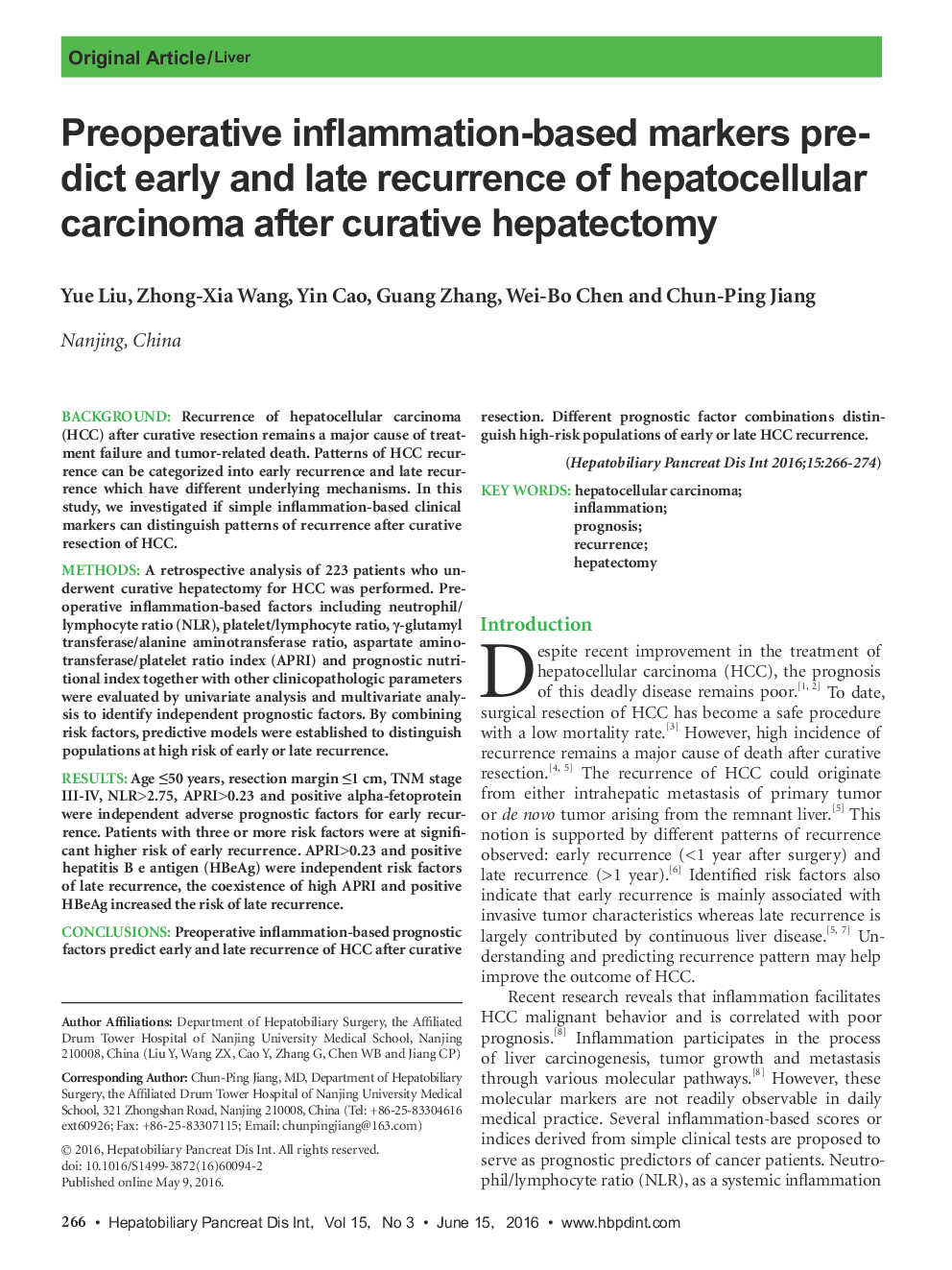| Article ID | Journal | Published Year | Pages | File Type |
|---|---|---|---|---|
| 3337209 | Hepatobiliary & Pancreatic Diseases International | 2016 | 9 Pages |
BackgroundRecurrence of hepatocellular carcinoma (HCC) after curative resection remains a major cause of treatment failure and tumor-related death. Patterns of HCC recurrence can be categorized into early recurrence and late recurrence which have different underlying mechanisms. In this study, we investigated if simple inflammation-based clinical markers can distinguish patterns of recurrence after curative resection of HCC.MethodsA retrospective analysis of 223 patients who underwent curative hepatectomy for HCC was performed. Preoperative inflammation-based factors including neutrophil/lymphocyte ratio (NLR), platelet/lymphocyte ratio, γ-glutamyl transferase/alanine aminotransferase ratio, aspartate aminotransferase/platelet ratio index (APRI) and prognostic nutritional index together with other clinicopathologic parameters were evaluated by univariate analysis and multivariate analysis to identify independent prognostic factors. By combining risk factors, predictive models were established to distinguish populations at high risk of early or late recurrence.ResultsAge ≤50 years, resection margin ≤1 cm, TNM stage III-IV, NLR>2.75, APRI>0.23 and positive alpha-fetoprotein were independent adverse prognostic factors for early recurrence. Patients with three or more risk factors were at significant higher risk of early recurrence. APRI>0.23 and positive hepatitis B e antigen (HBeAg) were independent risk factors of late recurrence, the coexistence of high APRI and positive HBeAg increased the risk of late recurrence.ConclusionsPreoperative inflammation-based prognostic factors predict early and late recurrence of HCC after curative resection. Different prognostic factor combinations distinguish high-risk populations of early or late HCC recurrence.
